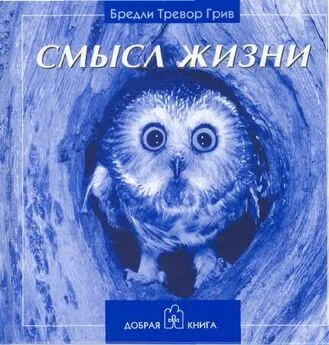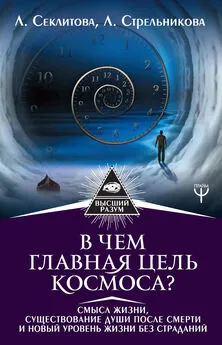Дуглас Кенрик - Инстинкты и смысл жизни. Почему в нас так много животного
- Название:Инстинкты и смысл жизни. Почему в нас так много животного
- Автор:
- Жанр:
- Издательство:Питер
- Год:2017
- Город:Санкт-Петербург
- ISBN:978-5-496-02956-8
- Рейтинг:
- Избранное:Добавить в избранное
-
Отзывы:
-
Ваша оценка:
Дуглас Кенрик - Инстинкты и смысл жизни. Почему в нас так много животного краткое содержание
Рассматривая человеческую природу с позиций эволюционной психологии, автор приходит к выводу, что за цивилизованным фасадом скрывается довольно дикое нутро. Но иррациональное поведение людей на самом деле глубоко рационально, включая даже расовые предрассудки и чрезмерное потребление.
Автор вскрывает истинную природу социальных проблем, международных конфликтов и глобальных рынков, поражая читателя яркими метафорами и нестандартными жизненными примерами и давая новые ответы на наиболее важные вопросы современной реальности.
Инстинкты и смысл жизни. Почему в нас так много животного - читать онлайн бесплатно полную версию (весь текст целиком)
Интервал:
Закладка:
Garcia, J., & Koelling, R. A. (1966). Relation of cue to consequence in avoidance learning. Psychonomic Science, 4, 123-124.
Gardner, H. (1985). The mind's new science: A history of the cognitive revolution. New York, NY: Basic Books.
Gigerenzer, G., & Selten, R. (2001). Bounded rationality: The adaptive toolbox. Boston, MA: MIT Press.
Gilbert, D. T. (2007). Stumbling on happiness. New York, NY: Vintage Books.
Glass, A. L., & Holyoak, K. J. (1986). Cognition (2nd ed.). New York, NY: Random House.
Gould, S. J., & Lewontin, R. (1979). The spandrels of San Marcos and the panglossian paradigm: A critique of the adaptationist programme. Proceedings of the Royal Society of London, B, 205, 581-598.
Gray, P. B., Campbell, B. C., Marlowe, F. W., Lipson, S. F., & Ellison, P. T. (2004). Social variables predict between-subject but not day-to-day variation in the testosterone of U.S. men. Psycho-neuronedocrinology, 29, 1153-1162.
Gray, P. B., Chapman, J. F., Burnham, T. C., McIntyre, M. H., Lipson, S. F., & Ellison, P. T. (2004). Human male pair bonding and testosterone. Human Nature, 15, 119-131.
Gray, P. B., Kahlenberg, S. M., Barrett, E. S., Lipson, S. F., & Ellison, P. T. (2002). Marriage and fatherhood are associated with lower testosterone in males. Evolution & Human Behavior, 23, 193-201.
Griskevicius, V., Cialdini, R. B., & Kenrick, D. T. (2006). Peacocks, Picasso, and parental investment: The effects of romantic motives on creativity. Journal of Personality & Social Psychology, 91, 63-76.
Griskevicius, V., Goldstein, N., Mortensen, C., Cialdini, R. B., & Kenrick, D. T. (2006). Going along versus going alone: When fundamental motives facilitate strategic (non)conformity. Journal of Personality & Social Psychology, 91, 281-294.
Griskevicius, V., Tybur, J. M., Gangestad, S. W., Perea, E. F., Shapiro, J. R., & Kenrick, D. T. (2009). Aggress to impress: Hostility as an evolved context-dependent strategy. Journal of Personality & Social Psychology, 96, 980-994.
Griskevicius, V., Tybur, J. M., Sundie, J. M., Cialdini, R. B., Miller, G. F., & Kenrick, D. T. (2007). Blatant benevolence and conspicuous consumption: When romantic motives elicit strategic costly signals. Journal of Personality & Social Psychology, 93, 85-102.
Gutierres, S. E., Kenrick, D. T., & Partch, J. (1999). Contrast effects in self assessment reflect gender differences in mate selection criteria. Personality & Social Psychology Bulletin, 25, 1126-1134.
Haidt, J. (2006). The happiness hypothesis: Finding modem tmth in ancient wisdom. New York, NY: Basic Books.
Harpending, H. (1992). Age differences between mates in Southern African pastoralists. Behavioral & Brain Sciences, 15, 102-103.
Hart, C. W. M., & Pillig, A. R. (1960). The Tiwi of North Australia. New York, NY: Holt.
Haselton, M. G., & Buss, D. M. (2000). Error management theory: A new perspective on biases in cross-sex mind reading .Journal of Perspnality & Social Psychology, 78, 81-91.
Haselton, M. G., & Gangestad, S. W. (2006). Conditional expression of women’s desires and men’s mate guarding across the ovulatory cycle. Hormones and Behavior, 49, 509-518.
Hatfield, E., Traupmann, J., Sprecher, S., Utne, M., & Hay, J. (1985). Equity and intimate relationships: Recent research. In W. Ickes (Ed.), Compatible and incompatible relationships (pp. 1-27). New York, NY: Springer-Verlag.
Helson, Н. (1947). Adaptation-level as frame of reference for prediction of psychophysical data. American Journal of Psychology, 60, 1-29.
Henrich, J., & Boyd, R. (1998). The evolution of conformist transmission and the emergence of between-group differences. Evolution and Human Behavior, 19, 215-242.
Hill, J. (1984). Prestige and reproductive success in man. Ethology & Sociobiology, 5, 77-95.
Hill, K., & Hurtado, M. (1989). Hunter-gatherers of the new world. American Scientist, 77, 437-443.
Holland, J. H. (1998). Emergence: From chaos to order. Reading, MA: Addison-Wesley.
Hölldoebler, В., & Wilson, E. O. (199A). Journey to the ants: A story of scientific exploration. Cambridge, MA: Harvard University Press.
Hölldoebler, В., & Wilson, E. O. (2008). Superorganism: The beauty, elegances, and strangeness of insect societies. New York, NY: Norton.
Hughes, B. O., & Dewar, W. A. (1971). A specific appetite for zinc in zinc-depleted domestic fowls. British Poultry Science, 12, 255-258.
Hughes, B. O., & Wood-Grush, D. G. M. (1971). Investigations into specific appetites for sodium and thiamine in domestic fowls. Physiology and Behavior, 6, 331-339.
James, W. (1890). The principles of psychology (Vol. 1). New York, NY: Holt.
Jankowiak, W. R., & Fischer, E. F. (1992). A cross-cultural perspective on romantic love. Ethnology, 31, 149-155.
Johnson, D., & Bering, J. (2006). Hand of God, mind of man: Punishment and cognition in the evolution of cooperation. Evolutionary Psychology, 4, 219-233.
Kahneman, D., & Tversky, A. (1979). Prospect theory: An analysis of decision under risk. Eco-nometrica, 47( 2), 263-291.
Kahneman, D., & Tversky, A. (1991). Loss aversion in riskless choice: A reference dependent model. In D. Kahneman & A. Tversky (Eds.), Choices, values, and frames (pp. 143-158). Cambridge, England: Cambridge University Press.
Kaplan, H. S., & Gangestad, S. W. (2005). Life history and evolutionary psychology. In D. M. Buss (Ed.), Handbook of evolutionary psychology (pp. 68-95). New York, NY: Wiley.
Karr, M. (2005). The liars' club: A memoir. New York, NY: Penguin.
Kenrick, D. T. (1995). Evolutionary theory versus the confederacy of dunces. Psychological Inquiry, 6, 56-61.
Kenrick, D. T. (2001). Evolution, cognitive science, and dynamical systems: An emerging integrative paradigm. Current Directions in Psychological Science, 10, 13-17.
Kenrick, D. T. (2006a). A dynamical evolutionary view of love. In R. J. Sternberg & K. Weis (Eds.), The new psychology of love (pp. 15-34). New Haven, CT: Yale University Press.
Kenrick, D. T. (2006b). Evolutionary psychology: Resistance is futile. Psychological Inquiry, 17, 102-108.
Kenrick, D. T. (in press). Evolutionary social psychology: From animal instincts to human societies. In A. Kruglanski, P. A. M. VanLange, & T. Higgins, Handbook of theory in social psychology. Newbury Park, CA: Sage.
Kenrick, D. T, Delton, A. W, Robertson, T, Becker, D. V. & Neuberg, S. L. (2007). How the mind warps: A social evolutionary perspective on cognitive processing disjunctions. In J. P. Forgas, M. G. Haselton, & W. Von Hippel (Eds.), Evolution and the social mind: Evolutionary psychology and social cognition (pp. 49-68). New York, NY: Psychology Press.
Kenrick, D. T., Gabrielidis, C., Keefe, R. C., & Cornelius, J. (1996). Adolescents’ age preferences for dating partners: Support for an evolutionary model of lifehistory strategies. Child Development, 67, 1499-1511.
Kenrick, D. T., Goldstein, N., & Braver, S. L. (in press). Six degrees of social influence: The science and application of Robert Cialdini. New York, NY: Oxford University Press.
Kenrick, D. T., Griskevicius, V., Neuberg, S. L., & Schaller, M. (2010). Renovating the pyramid of needs: Contemporary extensions built upon ancient foundations. Perspectives on Psychological Science, 5, 292-314.
Kenrick, D. T., Griskevicius, V., Sundie, J. M., Li, N. P, Li, Y. J., & Neuberg, S. L. (2009). Deep rationality: The evolutionary economics of decision-making. Social cognition, 27, 764-785.
Kenrick, D. T., & Gutierres, S. (1980). Contrast effects and judgments of physical attractiveness: When beauty becomes a social problem. Journal of Personality & Social Psychology, 38, 131— 140.
Kenrick, D. T., Gutierres, S. E., & Goldberg, L. (1989). Influence of erotica on ratings of strangers and mates .Journal of Experimental Social Psychology, 25, 159-167.
Kenrick, D. T., & Johnson, G. A. (1979). Interpersonal attraction in aversive environments: A problem for the classical conditioning paradigm? Journal of Personality & Social Psychology, 37, 572-579.
Kenrick, D. T., & Keefe, R. C. (1992). Age preferences in mates reflect sex differences in mating strategies. Behavioral & Brain Sciences, 15, 75-91.
Kenrick, D. T., Keefe, R. C., Bryan, A., Barr, A., & Brown, S. (1995). Age preferences and mate choice among homosexuals and heterosexuals: A case for modular psychological mechanisms .Journal of Personality & Social Psychology, 69, 1166-1172.
Kenrick, D. T., Li, N. P, & Butner, J. (2003). Dynamical evolutionary psychology: Individual decision-rules and emergent social norms. Psychological Review, 110, 3-28.
Kenrick, D. T., & Luce, C. L. (2000). An evolutionary life-history model of gender differences and similarities. In T. Eckes & H. M. Trautner (Eds.), The developmental social psychology of gender (pp. 35-64). Hillsdale, NJ: Erlbaum.
Kenrick, D. T., Maner, J. K., Butner, J., Li, N. P, Becker, D. V., & Schaller, M. (2002). Dynamic evolutionary psychology: Mapping the domains of the new interactionist paradigm. Personality & Social Psychology Review, 6, 347-356.
Kenrick, D. T., Montello, D. R., Gutierres, S. E., & Trost, M. R. (1993). Effects of physical attractiveness on affect and perceptual judgment: When social comparison overrides social reinforcement. Personality & Social Psychology Bulletin, 19, 195-199.
Kenrick, D. T., Neuberg, S. L., & Cialdini, R. B. (2010). Social psychology: Goals in interaction (5th ed.). Boston, MA: Allyn & Bacon.
Kenrick, D. T., Neuberg, S. L., Griskevicius, V., Becker, D. V., & Schaller, M. (2010). Goal-driven cognition and functional behavior: The fundamental motives framework. Current Directions in Psychological Science, 19, 63-67.
Kenrick, D. T., Neuberg, S. L., Zierk, K., & Krones, J. (1994). Evolution and social cognition: Contrast effects as a function of sex, dominance, and physical attractiveness. Personality & Social Psychology Bulletin, 20, 210-217.
Kenrick, D. T., Nieuweboer, S., & Buunk, A. P. (2010). Universal mechanisms and cultural diversity: Replacing the blank slate with a coloring book. In M. Schaller, S. Heine, A. Norenzayan, T. Yamagishi, & T. Kameda (Eds.), Evolution, culture, and the human mind (pp. 257-272). Mahwah, NJ: Erlbaum.
Kenrick, D. T., Sadalla, E. K., Groth, G., & Trost, M. R. (1990). Evolution, traits, and the stages of human courtship: Qualifying the parental investment model Journal of Personality, 58, 97-116. Special issue on Biological Approaches to Personality.
Kenrick, D. T., Sadalla, E. K., & Keefe, R. C. (1998). Evolutionary cognitive psychology: The missing heart of modern cognitive science. In C. Crawford & D. L. Krebs (Eds.), Handbook of evolutionary psychology (pp. 485-514). Hillsdale, NJ: Erlbaum.
Kenrick, D. T., Sanabria, F., Sundie, J. M., & Killeen, P. R. (2010, January). Game theory and social domains: How fitness interdependencies transform strategic decisions. Paper presented at Society for Personality & Social Psychology, Las Vegas, NV.
Kenrick, D. T., & Sheets, V. (1994). Homicidal fantasies. Ethology & Sociobiology, 14, 231-246.
Kenrick, D. T., & Shiota, M. N. (2008). Approach and avoidance motivation(s): An evolutionary perspective. In A. J. Elliot (Ed.), Handbook of approach and avoidance motivation (pp. 273-288). New York, NY: Psychology Press.
Читать дальшеИнтервал:
Закладка:










